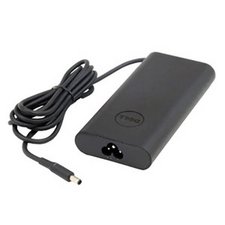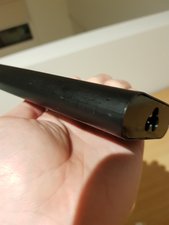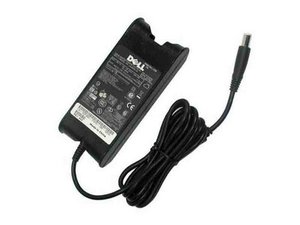Hi @simeonv ,
Don’t know the adapter and cannot see it too well in your image but is there a seam running along the long side of the case, so that if open the case would be in two parts?
If not, ignore the following ;-)
If so, I’ve had about a 75% success rate in opening plastic welded cases using the following method. The other 25% of the attempts results in the case being broken.
Place a broad bladed tool such as a 1.5” paint scraper along the seam and then give it a short sharp tap with a hammer and check if the case splits open. The sharper the blade the better
You might find that the inner “lip” of the case at the seam is damaged but this is not seen when the case is re-assembled but the exterior is not cracked.
As I said 3 out of 4 attempts are successful and once the case has split open you can prise it open further etc if it hasn’t already split completely apart. The failed attempts end in the case cracking and small pieces having to be glued back in place (if possible)
When re-assembling the case just glue it shut but be careful which glue you use as some glues don’t stick plastics that well and I’ve even had a “supa glue” that actually seemed to melt the plastic as it went soft and it still didn’t stick.
Usually I just glue it with a glue used for gluing paper and wrap some strips of electrical tape tightly around the case to hold it shut.







 2
2  1
1 
 1,5 mil
1,5 mil 
6 comentários
Hi simv,
My adapter has the same noise, when i plug in jack to laptop, the noise will appear, plug out laptop the noise not appear. What's wrong with your adapter? Did you repair it? If yes, could you share with me how to repair it? The coil or capacitor has fail?
Looking forward to your feedback.
Thank you!
por Tai Le
@taile I ended up destroying the case unfortunately (I intended on 3D printing a new case). They've basically filled the entire thing up with epoxy (or whatever it is). Even the components themselves are completely covered and inaccessible. I put it away in the 'deal with later' bin.
Anyone have any idea on how to remove the epoxy without damaging it?
por simv
@simeonv
Share more information with you
The seller gave to me another adapter and i see that the new one also has the noise but it is much smaller the old one. I think high ratio the pulse adapter have the noise because the transitor/coil on/off in very high frequency, it make the coil vibrates and make noise. This is the reason they must glue by expoxy to prevent vibrate of coil and components on the board.
Is expoxy hard or soft (like rubber)? You can try remove them by oil, spray oil on it and waite few minutes.
por Tai Le
@taile @jayeff Have you or anyone else found a way in? I bought 2 and one of them was DOA. I'm able to keep it, so I may see if I can open it (or at least do an autopsy).
I no longer trust the good one with the intended system so I need to try again for that, but I'm okay with using the good one for a bag pack-in. I also have no hope in it being repairable due to how it failed (unstable DC voltage; did not stay on) so if I destroy it I destroy it.
EDIT: I'M PARTIALLY IN :-). Not completely yet, but I got past the end cap where the DC jack is installed. Let me think about if I should even detail it... I have the photos available so if you or @jayeff want them, I'll consider it.
por Nick
I changed another adapter, and it still has very small noise. The pulse adapter usually has noise. But if the noise is very loud, we should check it. Up to now, i don't know how to remove its cover....
por Tai Le
Exibir mais 1 comentário